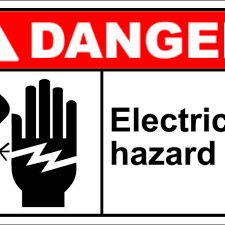- Empty cart.
- Continue Shopping
How to Protect Yourself from Electrical Hazards

Electricity is an integral part of modern life, powering everything from our homes to our workplaces. While it offers countless conveniences, it also poses certain risks if not handled properly. Electrical hazards can lead to shocks, burns, and even fatal accidents.
Understanding Electrical Hazards
Before diving into preventive measures, it’s crucial to understand the common electrical hazards you might encounter. These include:
- Exposed Wires: Worn-out or frayed electrical cords can expose wires, increasing the risk of electrical shock.
- Overloaded Circuits: Plugging too many devices into a single outlet can overload the circuit, leading to fires.
- Wet Conditions: Electricity and water are a dangerous combination, and wet conditions significantly increase the risk of electrical shock.
Safety Measures at Home
Regular Inspections
One of the best ways to prevent electrical hazards at home is through regular inspections. Check electrical outlets, switches, and cords for any signs of wear and tear, and replace them as needed.
Use GFCI Outlets
Ground Fault Circuit Interrupter (GFCI) outlets are designed to shut off electrical power in the event of a ground fault, reducing the risk of electrical shock. Install GFCI outlets in areas where electricity and water are in close proximity, such as bathrooms and kitchens.
Safety Measures in the Workplace
Follow Safety Protocols
Workplaces often have established safety protocols to protect against electrical hazards. Always adhere to these guidelines, which may include wearing appropriate personal protective equipment (PPE) and following lockout/tagout procedures for electrical equipment.
Regular Training
Stay updated on electrical safety through regular training sessions. These sessions can provide valuable insights into new safety measures and offer a refresher on existing protocols.
Emergency Response
First Aid
Knowing basic first aid for electrical injuries can be life-saving. If someone experiences an electrical shock, the first step is to disconnect the power source if it’s safe to do so. Call emergency services immediately and administer first aid as needed.
Fire Safety
Always have a fire extinguisher readily accessible, especially in areas with a high risk of electrical fires. Make sure you know how to use it properly to combat different types of fires, including electrical fires.
Finally, Electrical hazards are a real concern, but they can largely be mitigated through awareness and preventive measures. Regular inspections, adherence to safety protocols, and emergency preparedness are key to protecting yourself from electrical risks. Whether you’re at home or in the workplace, taking these steps can go a long way in ensuring your safety and that of those around you








